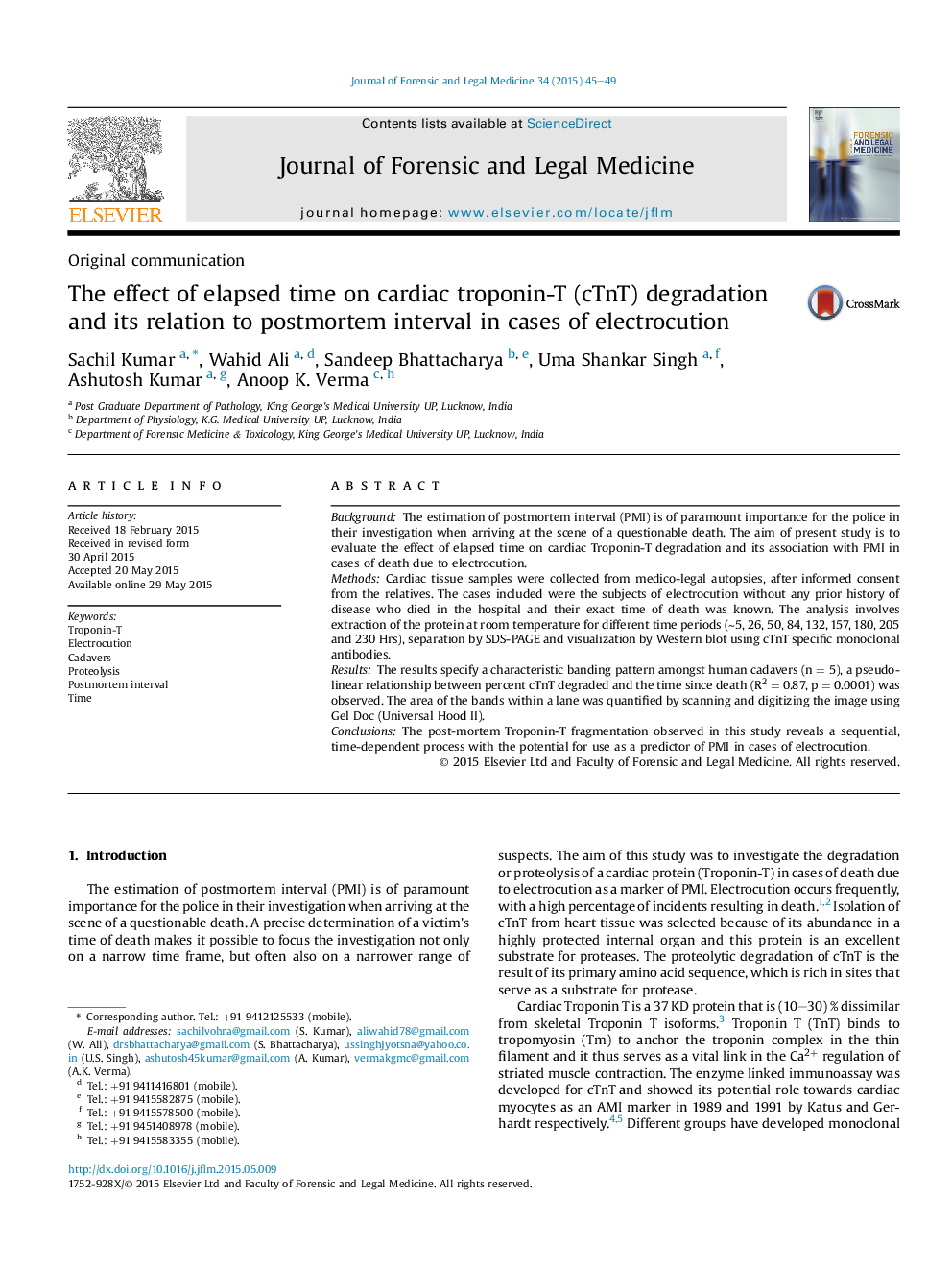| Article ID | Journal | Published Year | Pages | File Type |
|---|---|---|---|---|
| 101860 | Journal of Forensic and Legal Medicine | 2015 | 5 Pages |
•Effect of elapsed time on cardiac Troponin-T degradation and its association with PMI in cases of electrocution.•The cases included were the subjects of electrocution without any prior history of disease who died in the hospital.•Greatest amount of protein breakdown was observed within the first 50 Hrs.•The results specify a pseudo-linear relationship between percent cTnT degraded and the time since death (r = 0.87, p = 0.0001).•Present study used a simple and highly informative electrophoresis method that makes it an ideal for the forensic laboratory.
BackgroundThe estimation of postmortem interval (PMI) is of paramount importance for the police in their investigation when arriving at the scene of a questionable death. The aim of present study is to evaluate the effect of elapsed time on cardiac Troponin-T degradation and its association with PMI in cases of death due to electrocution.MethodsCardiac tissue samples were collected from medico-legal autopsies, after informed consent from the relatives. The cases included were the subjects of electrocution without any prior history of disease who died in the hospital and their exact time of death was known. The analysis involves extraction of the protein at room temperature for different time periods (∼5, 26, 50, 84, 132, 157, 180, 205 and 230 Hrs), separation by SDS-PAGE and visualization by Western blot using cTnT specific monoclonal antibodies.ResultsThe results specify a characteristic banding pattern amongst human cadavers (n = 5), a pseudo-linear relationship between percent cTnT degraded and the time since death (R2 = 0.87, p = 0.0001) was observed. The area of the bands within a lane was quantified by scanning and digitizing the image using Gel Doc (Universal Hood II).ConclusionsThe post-mortem Troponin-T fragmentation observed in this study reveals a sequential, time-dependent process with the potential for use as a predictor of PMI in cases of electrocution.
